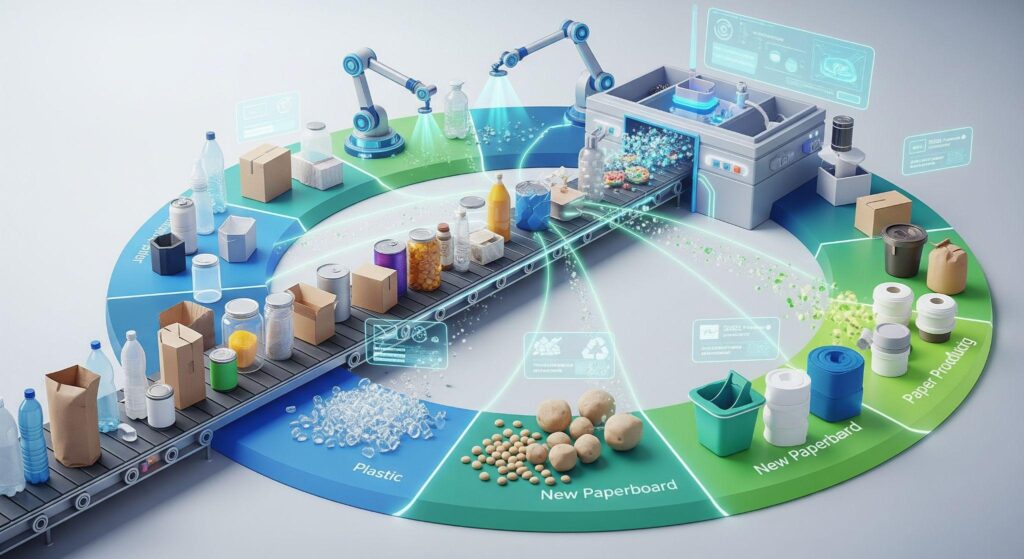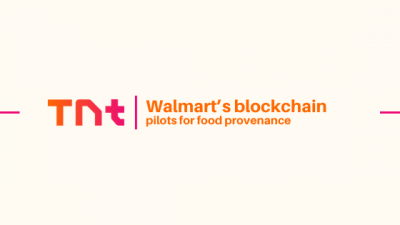
Introduction
Packaging waste has become a pressing regulatory and environmental issue, creating a substantial barrier to global sustainability efforts. Subsequently, the packaging waste recycling segment is forecasted to increase from USD 33.8 billion in 2025 to USD 53.0 billion by 2035. This boom is driven by chemical recycling, AI sorting advancements, EPR (expanded producer responsibility) programs, and advanced technologies, such as hydrothermal treatment and pyrolysis.
However, the type of packaging materials and their core chemistry mainly determine how they can be recycled, as chemical additives and multi-material formats often limit recycling options. Therefore, it is essential to connect the market with a collaborative business strategy for full-proofed recyclable packaging, combining knowledge of materials and chemicals.
Let us explore how the challenge of packaging waste can be transformed into an opportunity through Stellarix’s proven recyclable packaging strategy in this blog.
The Packaging Sustainability Landscape: Challenges and Material Complexity
The landscape of recyclable packaging is becoming increasingly complex due to the variety of materials, including plastics, metals, multi-layer laminates, and papers, each with its recycling methods and challenges. Additionally, increasing regulatory pressure in the UK and EU, along with a shift of waste disposal responsibilities and costs to producers under EPR schemes, as well as California’s ban on objectionable materials under state-level EPR regulations, pose significant issues.
Concurrently, balancing consumers’ rising demand and preference for sustainability while prioritizing shelf life, price, safety, quality, and convenience over eco-credentials makes it a critical task for industry leaders. Hence, by selecting additive-friendly, well-structured base materials, firms can both fulfill performance requirements while fostering and boosting recyclability in an intricate and ever-evolving landscape.
In 2025, mono-material solutions, digitally traced supply chains, and enzyme-enabled compostable plastics are redefining upcycled packaging. Market leaders are transitioning towards standard recycled PET through the launch of fully circular APET containers built for endless recyclability and low operational cost.
How Stellarix is Catalyzing Sustainable Packaging Innovation
In the last few years, Stellarix has helped several industry players bridge the gap between their packaging strategy and evolving sustainability benchmarks.
To help clients pursue their goals, Stellarix’s chemical & materials consulting team undertook multipronged approaches that included:
- Monitoring regulatory shifts, top consumer trends, and competitor activity to address growing packaging compliance risks amid 40+ global EPR schemes
- Evaluating recycling feasibility by shifting from multi-material and incompatible polymers to mono-materials, recyclable polyolefin, and biodegradable substrates
- Examining all kinds of additives, adhesives, and inks to ensure packaging fulfills both functional and circularity standards
- Aligning R&D, sustainability, procurement, and marketing with each other to assimilate materials innovation throughout the product lifecycle
Expert opinion: Pinkesh Shah, Chemicals & Materials Industry Expert, Stellarix
“The next frontier in packaging is not merely about accomplishing sustainability targets but incorporating smart, scalable materials and traceability into the fabric of the packaging ecosystem, making it practical, eco-friendly, and economically viable.”
Case Example: Global Food & Beverage Client
A leading F&B brand approached Stellarix to align its packaging with the Ellen MacArthur Foundation’s 2025 circular economy objectives. The client aimed to make 100% of its packaging recyclable by 2025 by reducing the use of virgin plastics by one-third within the same period.
Stellarix’s actionable guidance and data-driven insights in recycling infrastructure enabled the client to:
- Strategize EPR compliance across key markets
- Prioritize infrastructure investments in areas lagging in recycling capacity
- Redesign packaging solutions to meet the 30% post-consumer recycling threshold
Overall, the projections helped the company cut virgin plastic use by a third and reduce emissions to achieve net-zero targets by 2050. This data-driven approach strengthened the client’s sustainability plan and supported their long-term ESG objectives.
What Kind of Strategic Roadmap Could be Elemental to Achieving 100% Sustainable Packaging?
- Material Innovation: The shift to mono-materials such as polyethylene and recyclable polyethylene decreases incompatibility within the recycling streams. Therefore, it is advisable to select options with minimal additives and better post-consumer recovery potential.
- Design Simplification: Reducing the use of coatings, adhesives, metallization, and complex ink systems significantly enhances the ease of recycling. Therefore, focus should be given to aligning design-for-recycling principles with international protocols.
- Partnerships with Technology Providers and Collaborations at Scale: Innovations in chemical and enzymatic recycling aid in finding solutions for hard-to-recycle plastics. Collaborating with technology start-ups, recyclers, and material recovery companies is a strategic way forward.
- Circular Sourcing and Cross-Supply Chain Integration: Integration of circular economy principles requires upstream coordination. Streamlining recycled content, auditing supplier practices, and ensuring traceability can help meet EPR and ESG reporting obligations.
The Path Ahead
Projections for a threefold increase in demand for recycled packaging by 2030 exceed supply growth, highlighting the urgent need to accelerate the shift to more substantial recyclable solutions, especially in the chemicals and materials industry. Currently, fully recyclable packaging is viewed not only as a sustainability measure but also as a way to significantly cut logistics costs and carbon emissions. It is emphasized that cross-supply chain orchestration, digital tracking, adherence to circular value chain principles, and early compliance with global ESG mandates help companies achieve a quick return on investment.
Companies combining market strategy with materials and chemical intelligence will shape the future of green packaging. Stellarix, with its chemical industry experts and strategy consulting services, extends a helping hand to organizations aiming for full recyclability without compromising safety or shelf life, promoting circularity in product development.
Information contained on this page is provided by an independent third-party content provider. Binary News Network and this Site make no warranties or representations in connection therewith. If you are affiliated with this page and would like it removed please contact [email protected]



Comments